QNX 2 per virtual machine
Let's move to 1988 ... Microsoft just released MS-DOS 4.01, and IBM started selling OS / 2 1.1 (the author of this note on Habré only dreamed of BK-0010 and such high matters as operating systems did not even think about) . At that time, QNX 2 OS outperformed others by years. And even now, more than a quarter of a century later, QNX 2 is still working on industrial equipment, in “clean rooms” , avionics, and military equipment. On Habré there was a note about QNX system which worked 15 years without stopping !
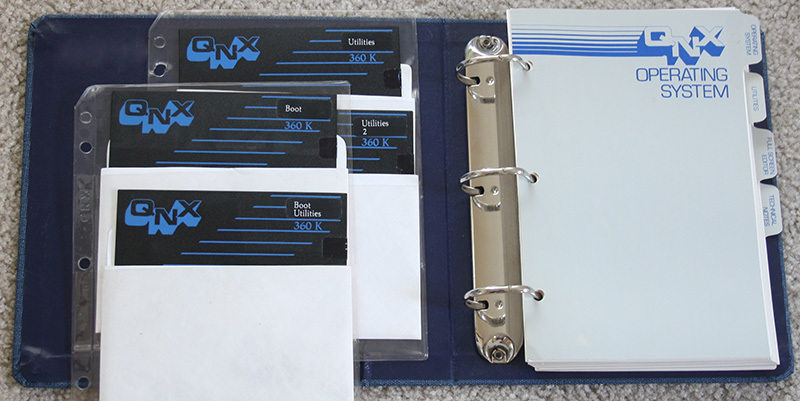
The search for a working set of floppy disks with QNX 2 took some time, the searches were difficult and expensive. Fortunately, I managed to find what I was looking for. Let's just see how the system is installed on modern hardware under VMware Workstation.
Installation is pretty simple. Boot diskette booting ends with a login prompt.
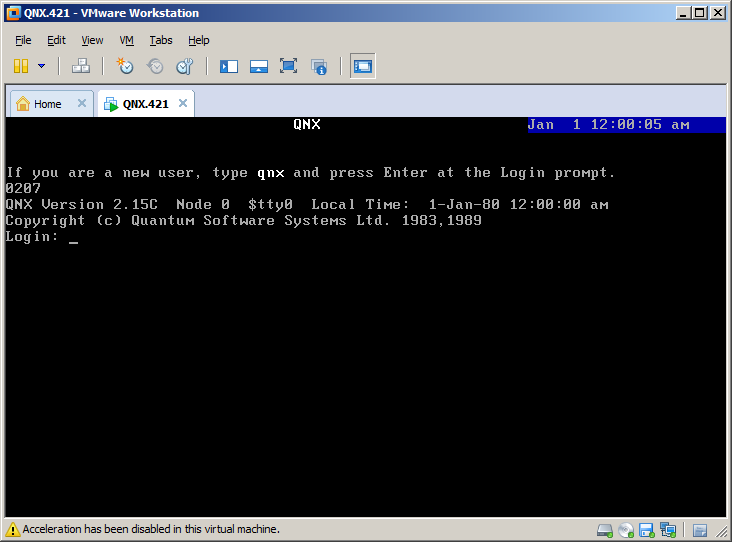
After logging in with the login qnx, you will need to change the floppy disk to Boot Utilities and start the installation. The script will guide us through all stages of the installation.
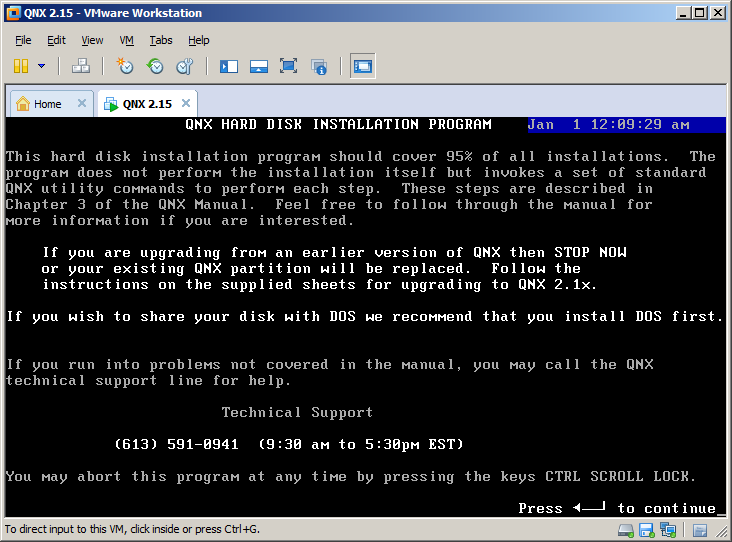
First you need to select a disk controller. For compatibility mode, QNX 2 provides operation via int 13 (in real mode).

Then the disk is divided into sections. QNX 2 uses partitions with identifiers 7, 8, or 9. At one of the next installation steps, you will be prompted to mark the partition as bootable.
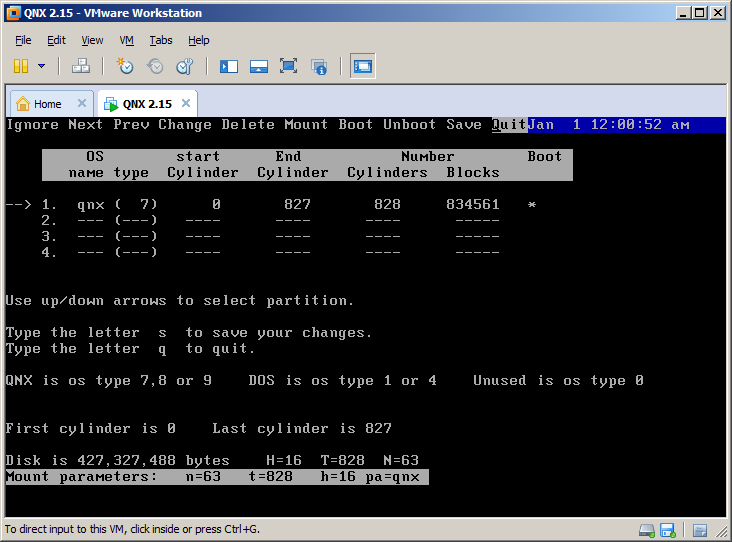
Then you need to select the core. QNX 2 can operate in real mode or in protected mode on the AT286.
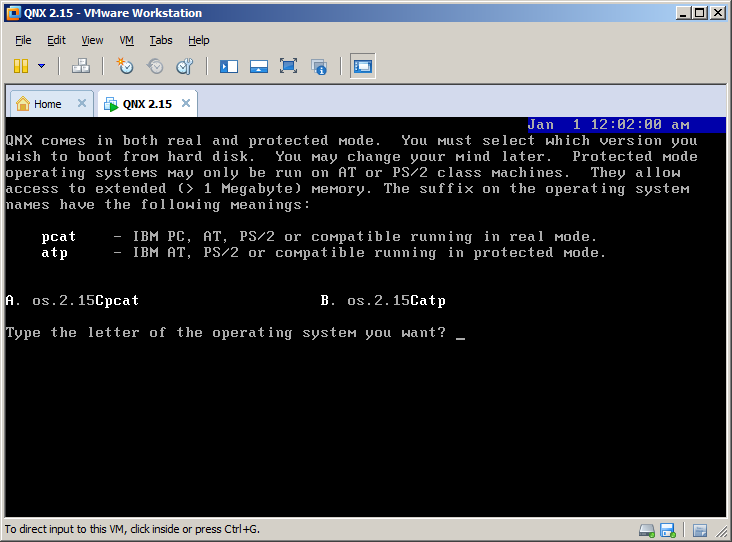
The installation script copies data from distribution floppies, configures the boot loader and the active partition. After that, you can configure the video subsystem.

The OS also allows you to select network settings. Unfortunately, QNX then supported only ARCnet controllers. After the installation is complete, it is proposed to remove the floppy and restart the machine. Below is the screen that appears after the first boot from the hard disk.

As a PS You should not assume that QNX 2 is dead or out of date system. Many operating systems of those years and even much later ones are abandoned and completely forgotten. With QNX 2, this is not the case. The OS is still used in the embedded world, and the QNX manufacturer still supplies licenses for it.
')
Source: https://habr.com/ru/post/305368/
All Articles